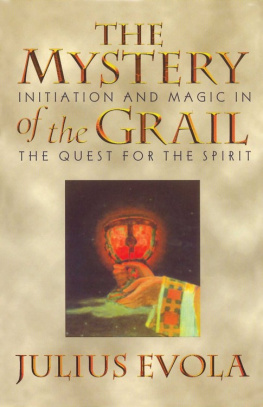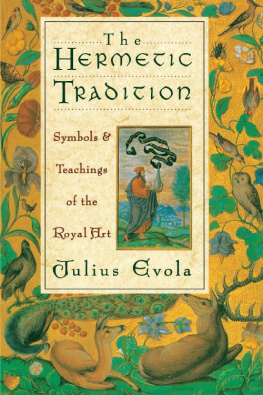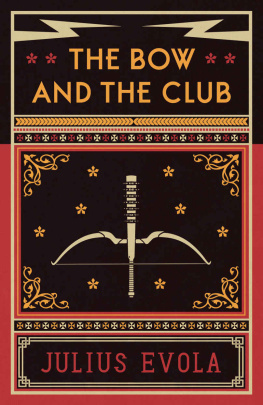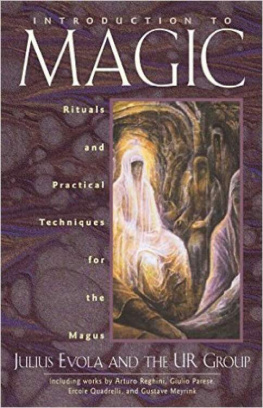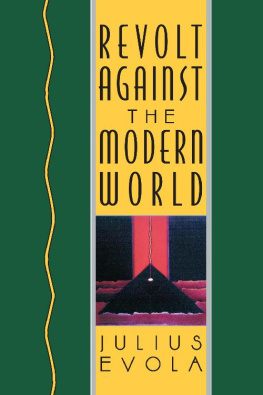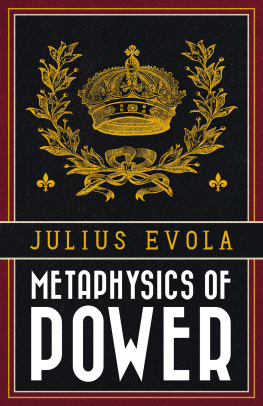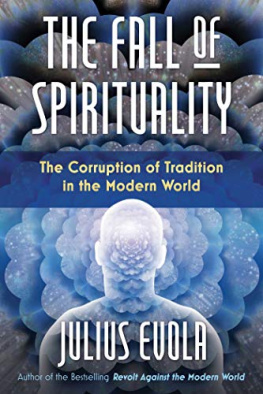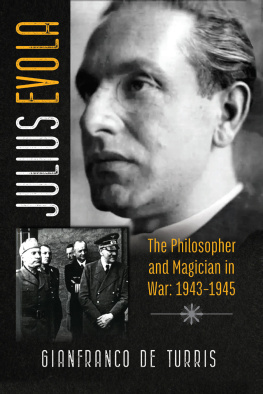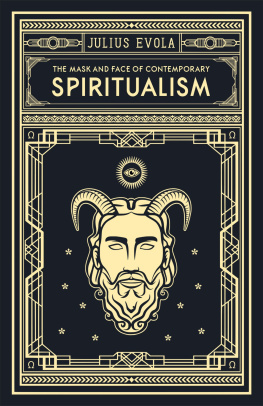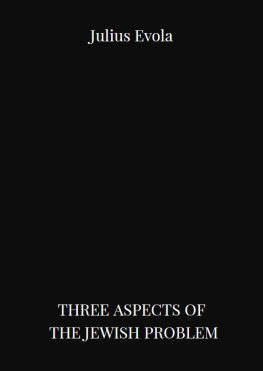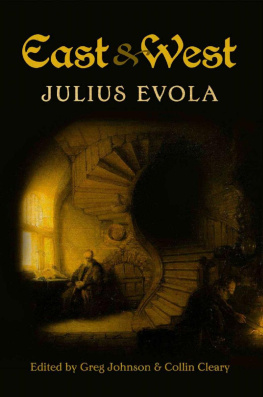Julius Evola - The Mystery of the Grail: Initiation and Magic in the Quest for the Spirit
Here you can read online Julius Evola - The Mystery of the Grail: Initiation and Magic in the Quest for the Spirit full text of the book (entire story) in english for free. Download pdf and epub, get meaning, cover and reviews about this ebook. year: 1996, publisher: Inner Traditions, genre: Religion. Description of the work, (preface) as well as reviews are available. Best literature library LitArk.com created for fans of good reading and offers a wide selection of genres:
Romance novel
Science fiction
Adventure
Detective
Science
History
Home and family
Prose
Art
Politics
Computer
Non-fiction
Religion
Business
Children
Humor
Choose a favorite category and find really read worthwhile books. Enjoy immersion in the world of imagination, feel the emotions of the characters or learn something new for yourself, make an fascinating discovery.
- Book:The Mystery of the Grail: Initiation and Magic in the Quest for the Spirit
- Author:
- Publisher:Inner Traditions
- Genre:
- Year:1996
- Rating:4 / 5
- Favourites:Add to favourites
- Your mark:
- 80
- 1
- 2
- 3
- 4
- 5
The Mystery of the Grail: Initiation and Magic in the Quest for the Spirit: summary, description and annotation
We offer to read an annotation, description, summary or preface (depends on what the author of the book "The Mystery of the Grail: Initiation and Magic in the Quest for the Spirit" wrote himself). If you haven't found the necessary information about the book — write in the comments, we will try to find it.
The Mystery of the Grail: Initiation and Magic in the Quest for the Spirit — read online for free the complete book (whole text) full work
Below is the text of the book, divided by pages. System saving the place of the last page read, allows you to conveniently read the book "The Mystery of the Grail: Initiation and Magic in the Quest for the Spirit" online for free, without having to search again every time where you left off. Put a bookmark, and you can go to the page where you finished reading at any time.
Font size:
Interval:
Bookmark:

INITIATION AND MAGIC IN THE QUEST OF THE SPIRIT
Contents
Foreword VI!
1. The Literary Prejudice 3
2. The Ethnological Prejudice 6
3. Concerning the Traditional Method 9
4. The Historical Context of the Mystery of the Grail 12
5. The Olympian Cycle 17
6. On the "Hero" and the "Woman" 19
7. The Hyperborean Theme 23
8. The Tradition in Ireland 25
9. The Arthurian Cycle 31
10. The Imperial Saga and the Universal Ruler 38
11. Frederick, Prester John, and the Tree of the Empire 43
12. Dante: The Greyhound and the Dux 50
13. The Sources of the Grail 57
14. The Virtues of the Grail 64
15. The Luciferian Stone 72
16. The Test of Pride 75
17. The Thunderbolt and the Lance 82
18. The Mystery of the Lance and of Revenge 89
19. The Dolorous Stroke 93
20. The Fisher King 101
21. The Seat of the Grail 104
22. Initiatory Adventures of the Grail's Knights 108
23. The Grail as a Ghibelline Mystery 119
24. The Grail and the Knights Templar 127
25. The Grail, the Cathars, and the Love's Lieges 138
26. Dante and the Love's Lieges as a Ghibelline Militia 144
27. The Grail and the Hermetic Tradition 150
28. The Grail and the Rosicrucians 158
The original version of Julius Evola's Mystery of the Grail formed an appendix to the first edition of his masterpiece, Rivolta contra il mondo moderno (1934).1 Three years later he reworked that appendix into the present book, which first appeared as part of a series of religious and esoteric studies published by the renowned Laterza Publishers in Bari, Italy, whose list included works by Sigmund Freud, Richard Wilhelm, and C. G. Jung, among others.
The Grail book is closely related to Revolt Against the Modern World, where Evola discussed, within the framework of his "suprahistorical" analysis, medieval chivalry and the notion of a symbolic empire based on a sacred regality. Above all, Evola wanted to make three things clear:
1. The Grail was not a Christian but a Hyperborean mystery.
2. The Grail legend deals with an initiatory mystery.
3. The Grail is a symbolic expression of hope and of the will of specific ruling classes in the Middle Ages (namely, the Ghibellines), who wanted to reorganize and reunite the entire Western world as it was at that time into a Holy Empire, that is, one based on a transcendental, spiritual basis.
This foreword first appeared in Ansata-Verlag's Das Mysterium des Grals (Interlaken, Switzerland, 1978). It is translated from the German by Susan Essex.
l. Revolt Against the Modern World, trans. Guido Stucco (Rochester, Vt.: Inner Traditions, 1995). It is not possible to have a true understanding of Evola without knowledge of his Revolt, which most dearly demonstrates the principles of his worldview.
studies at the University of Florence, writes in his introduction to the fourth Italian edition (Rome, 1994) of a "peculiar tendency to oversimplify among many authors, who assume that the Grail can be explained with a single, basic theory." First-and here Evola would fully agree-it's a question of a myth, and a myth is by definition not single- but multifaceted. Second, the myth of the Grail embraces many different types of influences, above all:
1. Christian legend (at least from a later period).
2. Celtic folklore.
3. The so-called Isis Book (the eleventh book of Apuleius's Metamorphosis, which, based on ancient sources, describes the opening of the way in the Isis Mystery), as well as the Corpus Hermeticum.
That, at least, is the view of Henry and Renee Kahane in the Standard Encyclopedia of Religion (vol. 6, New York, 1987), compiled under the direction of Mircea Eliade, easily the best-known scholar of religions in this century.
The various interpretations of the Grail thus differ greatly, extending from the priestly chalice to the "manna machine" for the automatic production of nourishment, or even to the equation of the "Grail of Joy" with the vagina. The cited origins range likewise from the Western world (Burdach) to the Islamic and Persian East (Corbin). To this may also be added the works by such analytical psychologists as Emma Jung, Marie-Louise von Franz, and Robert A. Johnson. I
One thing appears to be certain, however: the myth of the Grail does not deal with mere fantasies in a purely aesthetic-poetic sense. As Franco Cardini writes, "No author in the Middle Ages ever wrote a single line on the basis of his pure and bare fantasies, and it would be antihistorical to suggest such a thing:'
Another point of interest, in the current debate of gender differences: It is always men who go off in search of the Grail, because women, by nature, already possess it. Thus in all versions of the legend, only women are referred to as carriers of the Grail. But as Helen Luke believes, expressing a Jungian perspective, many women today have contempt for the spiritually, psychologically, and physically nourishing Grail function of their womanhood, since they are striving for the same positions as men in areas that, until now, were purely masculine domains.2 In so doing, these women outgrow their own essence and no longer have any counterbalance to their now overpowering masculine sides.
2. John Matthews, ed., At the Table of the Grail (London, 1984), p. 92.viiiIn other words, they have lost their own Grail, and have to go off in search of it again, just as the men do, in order to find spiritual harmony.What did Evola hope for when he published his book? In the epilogue to the first edition (1937) he expressed it dearly:To live and understand the symbol of the Grail in its purity would mean today the awakening of powers that could supply a transcendental point of reference for it, an awakening that could show itself tomorrow, after a great crisis, in the form of an "epoch that goes beyond the nations." It would also mean the release of the so-called world revolution from the false myths that poison it and that make possible its subjugation through dark, collectivistic, and irrational powers. In addition, it would mean understanding the way to a true unity that would be genuinely capable of going beyond not only the materialistic-we could also say Luciferian and Titanic-forms of power and control but also the lunar forms of the remnants of religious humility and the current neospiritualistic dissipation.
But, added Evola, he would have to leave it open whether such a development would occur. It would therefore be useless to form any kind of organization that could be influenced by this development.
In order to understand these words fully, one must keep in mind that Evola's endeavor since 1925, at the latest, was to influence the political development of Italy along the lines of a spiritual restoration of the ancient Roman Empire. Fascism, which was already in power at that time, appeared to fulfill quite a lot of prerequisites for such a revolution-indeed, Mussolini himself had no aversion to such ideas.3
In 1928 Evola published his first political book, Imperialismo pagano, which fought for exactly that-a pagan imperialism-in a considerably polemic manner. Mussolini's compact with the Catholic Church in 1929, which opposed any endeavor to extinguish the power of the Church, shattered Evola's hopes once and for all. As Piero Fenili has suggested in his series of essays "Gli errori di Julius Evola" (The errors of Julius Evola;
Font size:
Interval:
Bookmark:
Similar books «The Mystery of the Grail: Initiation and Magic in the Quest for the Spirit»
Look at similar books to The Mystery of the Grail: Initiation and Magic in the Quest for the Spirit. We have selected literature similar in name and meaning in the hope of providing readers with more options to find new, interesting, not yet read works.
Discussion, reviews of the book The Mystery of the Grail: Initiation and Magic in the Quest for the Spirit and just readers' own opinions. Leave your comments, write what you think about the work, its meaning or the main characters. Specify what exactly you liked and what you didn't like, and why you think so.

